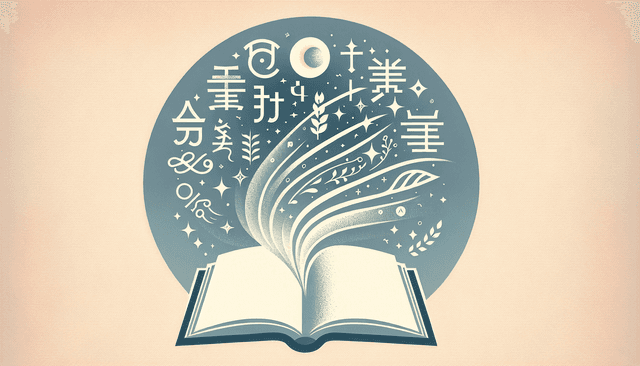Table of Contents
Translating books can be a real headache, right? You want your story to reach readers around the world, but the thought of finding the right words in another language can be daunting. Whether it’s the nuances of culture, idioms, or just getting the vibe right, there’s a lot at stake when you’re looking to share your masterpiece.
But don’t worry! If you stick around, we’ll explore book translation services together, and by the end, you’ll know exactly how to navigate this process like a pro. You’ll discover the types of services available, the benefits of professional help, and even tips to get it right.
So, grab a cup of coffee and let’s dive into the world of book translation. We’ll break down everything you need to know to ensure your words resonate no matter where they land!
Key Takeaways
- Book translation services convert written works into different languages, going beyond simple translations to capture tone and culture.
- Benefits include access to new markets, increased credibility, and wider readership, boosting sales and visibility.
- Types of services include literary translation, localized translation, and technical translation to suit different needs.
- When choosing a translation service, research experience, check reviews, and request samples to ensure quality.
- Book translation involves reading, drafting, revising, proofreading, and formatting for publication.
- Costs vary based on book length, material complexity, language pairs, and turnaround time.
- Cultural nuances and idiomatic expressions can pose challenges during translation.
- Spanish and Mandarin are popular languages for translation due to large audiences.
- Maintain clear communication with your translator and consider professional editing for best results.
- Timelines for translation can range from weeks to months; clarify royalty arrangements with your translator beforehand.

What Are Book Translation Services?
Book translation services are specialized offerings that help authors and publishers convert their written works into different languages.
This process goes beyond simple word-for-word translation; it involves capturing the essence, tone, and cultural nuances of the original text.
These services are essential for reaching wider audiences, especially if a book has the potential to resonate with readers worldwide.
For example, if a popular English novel is translated into Spanish, it could open the doors to millions of potential readers who prefer books in their native language.
Benefits of Book Translation Services
Utilizing book translation services can significantly increase your reach and credibility as an author.
One major benefit is access to new markets; translating your work allows you to tap into international readerships, boosting sales and popularity.
Moreover, engaging more audiences can lead to more reviews and word-of-mouth recommendations, ultimately enhancing your book’s visibility.
Plus, quality translations can build your reputation as a serious author, making your work more attractive to publishers. This added credibility can be essential if you’re looking for partnerships or seeking to get your book published.
Types of Book Translation Services
There are several types of book translation services, tailored to different needs and budgets.
Professional literary translation is where a translator specializes in rendering literary works into another language, ensuring artistic integrity is preserved.
Then there’s localized translation, which adapts the content for specific cultural contexts, a crucial approach if your book contains references that may not be universally understood.
Technical translation exists as well, often used for instructional or academic texts that require precise language. If you’re unsure about which type fits your book, it might be wise to consult resources that specialize in this area, such as self-publishing guides.

How to Choose the Right Book Translation Service
Choosing the right book translation service is crucial for the success of your project.
Start by researching potential providers to see their specialties and previous work.
Look for translators who have experience in your genre; this can significantly affect the final product.
Check online reviews and testimonials to gauge the quality of their past translations.
It’s also a good idea to ask for sample translations, as this gives you a sense of their style and accuracy.
Finally, consider their ability to meet deadlines and communicate effectively throughout the process.
Steps Involved in Book Translation
Book translation involves several key steps to ensure a high-quality outcome.
First, the translator reads the entire book to understand its style and context.
Next, they create a rough draft of the translation, focusing on maintaining the original tone and meaning.
Once the draft is complete, it goes through a revision process, where the translator refines the language and checks for consistency.
After that, proofreading is essential to catch any typos or grammatical errors.
Finally, the translation is formatted and prepared for publication, including any necessary adaptations to fit cultural contexts.
Factors That Affect Book Translation Costs
The cost of book translation can vary widely based on several factors.
Firstly, the length of the book plays a significant role; longer texts typically cost more to translate.
The complexity of the material is also important; specialized topics may require translators with specific expertise, often increasing the price.
Additionally, the languages involved can impact costs—some pairs may have fewer qualified translators, leading to higher fees.
Lastly, the turnaround time can affect pricing; expedited services usually come at a premium.
Common Challenges in Book Translation
Book translation presents various challenges that can affect the final result.
One major hurdle is cultural nuances, where certain phrases or contexts don’t translate directly.
Idiomatic expressions can be particularly tricky, requiring creative adaptations to maintain the original meaning.
Another challenge is word count; a translation may end up being longer or shorter, affecting layout and formatting.
Finding the right balance between remaining true to the original text and resonating with the new audience can often be a delicate process.
Popular Languages for Book Translation
Some languages are more frequently sought for book translation due to global readerships.
Spanish is one of the most popular choices, opening doors to millions of readers in various countries.
Mandarin Chinese is also in high demand, reflecting China’s growing influence in the literary world.
French and German are often next on the list, as they have rich literary traditions and large audiences.
Ultimately, the choice of language should align with the target market for your book to maximize its reach.
Tips for Successful Book Translation
To achieve a successful book translation, ensure clear communication with your translator.
Provide detailed context and background about your book, which can guide their translation process.
Regularly check in on progress, offering feedback and being open to constructive discussions.
Consider working with professional editors familiar with your target language to review the translation.
Lastly, investing in marketing strategies for the translated version can enhance its reception in new markets.
Frequently Asked Questions About Book Translation Services
Many authors have questions about book translation services, especially around timelines and quality.
Commonly, authors ask, “How long does the translation process take?” It can vary but generally ranges from a few weeks to several months.
Another frequent question is, “Can I use machine translation?” while it can help with rough drafts, relying solely on it is often not recommended for literary works.
Lastly, authors often wonder about royalty arrangements; it’s essential to clarify this with your translator beforehand.
FAQs
Look for services that specialize in your book’s genre, experienced translators, positive reviews, cultural understanding, and strong communication. Ensure they provide quality assurance and can handle your specific linguistic requirements.
The duration of book translation varies based on factors such as text length, complexity, and translator workload. Generally, expect the process to take anywhere from a few weeks to several months.
Common challenges include maintaining cultural nuances, idiomatic expressions, and ensuring thematic consistency. Additionally, translators must navigate different writing styles and formatting requirements, which can complicate the translation process.
Cost factors include the length of the book, complexity of the subject matter, language pair, translation experience, and any additional services like editing or proofreading. Always get a detailed quote before starting.



